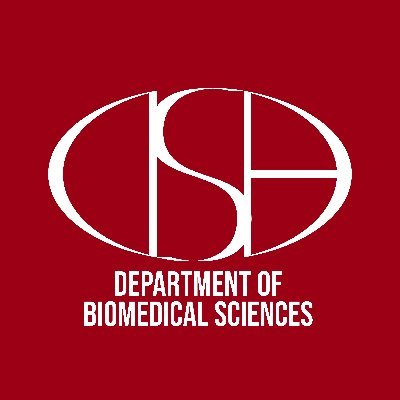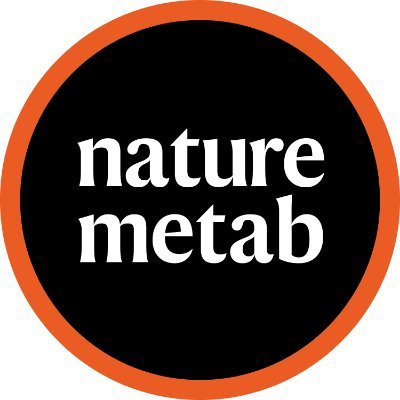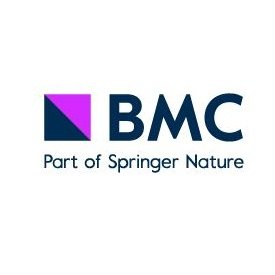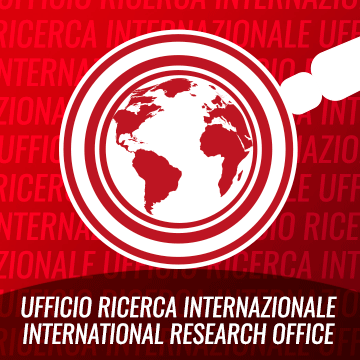
@dsb_unipd
@dsb_unipd
Followers
172
Following
125
Media
12
Statuses
108
Department of Biomedical Sciences - University of Padova Policy sui social di Ateneo https://t.co/sWYNs9WpqH https://t.co/AmpLS7d8C0
Università di Padova
Joined November 2022
Take a look at our last review on PMCAs and cerebellar Ataxia! @BioMedCentral Biology Direct!
link.springer.com
Ca²⁺ signaling is essential for neuronal development, migration, synaptic activity, spine plasticity, neurotransmitter release, membrane excitability, and long-term synaptic plasticity, as well as...
0
5
10
@NatMetabolism 👆👆👆A Must Read! Congratulations @AgostinisLab and team for the outstanding work! An elegant and highly relevant study uncovering disease mechanisms through lysosome–mitochondria contacts, a major step forward for the field. 👏
0
2
4
BDH2-driven lysosome-to-mitochondria iron transfer shapes ferroptosis vulnerability of the melanoma cell states
nature.com
Nature Metabolism - Rizzollo et al. show that BDH2 participates in iron distribution between cellular compartments, which sets the threshold for the ferroptosis vulnerability of the melanoma cell...
2
17
63
Call for Content: Don't forget to submit to Biology Direct's new Collection 'Evolution of prokaryote virus defense'! Guest Edited by Nash Rochman, Tito Calì and Daniele Marcoccia @lab_cali
https://t.co/rzMTjfKSXB
0
2
2
Call for Content: Don't forget to submit to Biology Direct's new Collection 'Evolution of prokaryote virus defense'! Guest Edited by Nash Rochman, Tito Calì and Daniele Marcoccia @lab_cali
https://t.co/Wdod1t4s7J
0
3
3
🚨 New Review Alert! 🚨 Our latest in CSH Perspectives in Biology explores when, where, and how calcium ions flow between organelles—and why this matters for cellular signaling & health. Read more 👉 #CellBiology #Calcium @cshperspectives
https://t.co/T7DZUWKDPr
1
7
16
Proud to share the collaborative work with @NasuLab_IBC & @Campbell_FPs (Robert E. Campbell)! Split biosensors have been developed to intrinsically monitor membrane contact & Ca²⁺ exchange simultaneously—no chemical fluorophores required! 👉
https://t.co/e562JyYR11"
pubs.acs.org
Self-complementing bipartite fluorescent proteins (FPs) are useful tools for the detection of protein–protein proximity and for localizing fluorophores to membrane–membrane contact sites. Here, we...
3
20
69
🧠💤 Mitochondrial origins of the pressure to sleep. This is so cool—sleep deprivation increases ER–mito contacts (thanks SPLICS! 🙏➡️🔆⬅️). Congrats to the team! Turns out your organelles need rest too. 😴 Mind your contacts if you want to count sheep. 📄
nature.com
Nature - Research on Drosophila neurons shows links between the need to sleep and aerobic metabolism, indicating that the pressure to sleep may have a mitochondrial origin.
1
5
40
🧪 We have a new publication out in @NatureComms. 🧪Great collaborative work involving @KclRandallMol, @dsb_unipd, @PhD_DSB_UniPD, @cnr_scitec, @humantechnopole. Here's the link
nature.com
Nature Communications - Kinesin-1 utilizes ATP-driven conformational changes to transport vital intracellular cargoes along microtubules. The authors use cryo-EM to reveal a missing structural...
1
5
7
New Online! Key challenges and recommendations for defining organelle membrane contact sites https://t.co/ZGhjrQsQzC
2
85
280
🚨 New review out in Nature Reviews Molecular Cell Biology! Expert recommendations for studying organelle contact sites and introduce the concept of organelle contactome 🧬 https://t.co/8gWJlHFAgN Huge thanks to editor Lisa Heinke for the support and guidance! 🙏@NatRevMCB
nature.com
Nature Reviews Molecular Cell Biology - Membrane contact sites between organelles facilitate the exchange of ions, lipids and metabolites. This Expert Recommendation highlights recent advances in...
2
18
96
🧬𝐌𝐚𝐫𝐜𝐨 𝐒𝐚𝐧𝐝𝐫𝐢 is Full Prof at @dsb_unipd & former winner of an ERCCoG Grant in 2011. The aim of his project is to dissect the mechanisms of cachexia &develop an RNA-based therapeutic approach to restore a normal gene signature &prevent cachexia onset &patient’s death.
0
1
3
Call for Content: Don't forget to submit to Biology Direct's new Collection 'Evolution of prokaryote virus defense'! Guest Edited by Nash Rochman, Tito Calì and Daniele Marcoccia @lab_cali
https://t.co/Wdod1t4s7J
0
3
4
Being able to contribute in a very small part to @ccp4_mx has been one of the highlights of my career so far. So happy that this paper received enough views to be a Top Viewed Article. Read it here https://t.co/fMOtUu7oMV
#TopViewedArticle @wileyinresearch
onlinelibrary.wiley.com
This article describes the Collaborative Computational Project No. 4 (CCP4). It is intended as a general literature citation for the use of the CCP4 software suite in structure determination.
0
6
6
Join us for this wonderful international practical school. Great speakers and tutors. Register now https://t.co/2dgYtFxSOL
#cryoEM #structural_biology #crystallography @AICryst @UniPadova
0
10
15
🚀 New paper! 🧬✨Thrilled to share our latest work @cddpress, pushing the boundaries of imaging inter-organelle contacts in vivo! Incredible effort by our talented postdoc Lucia Barazzuol, in collaboration with @alessio_vagnoni and the Marisa Brini Lab. https://t.co/rijEh14JCh🚀
3
10
27
Dear old aspirin…. A new study shows it prevents metastasis by limiting platelet TXA2–mediated suppression of T cell immunity. From heart attacks to cancer... is there anything it can’t do?
nature.com
Nature - Inhibition of cyclooxygenase 1 releases T cells from immunosuppression by platelet-derived thromboxane A2, thereby enhancing the immune response against metastasis.
0
4
20
Moving Biology Direct towards a new dimension!@BioMedCentral, @melino_G
biologydirect.biomedcentral.com
0
2
2
Grateful to collaborate with J. César Cárdenas on this study highlighting the crucial role of Ca²⁺ fluxes at mitochondria-ER contact sites in maintaining the viability of senescent cells. Exciting insights into cellular aging!
nature.com
npj Aging - Calcium (Ca2+) fluxes at mitochondria-ER contact sites (MERCS) are a new target of senolysis in therapy-induced senescence (TIS)
0
26
126
Calcium (Ca2+) fluxes at mitochondria-ER contact sites (MERCS) are a new target of senolysis in therapy-induced senescence (TIS) | npj Aging
nature.com
npj Aging - Calcium (Ca2+) fluxes at mitochondria-ER contact sites (MERCS) are a new target of senolysis in therapy-induced senescence (TIS)
0
37
111


















